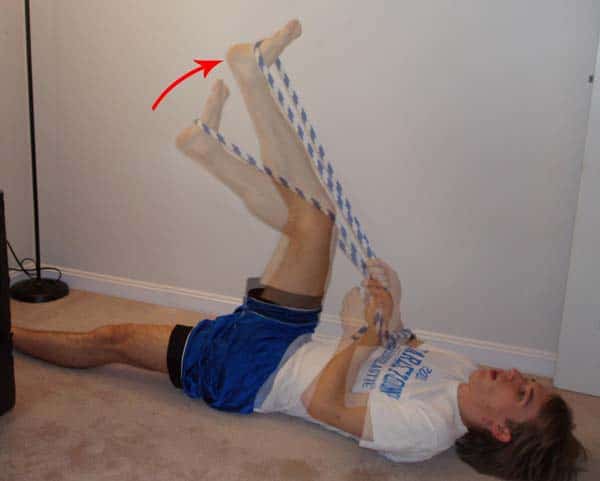How Long on Baclofen Until Im Able to Run Again
It is that spasm that shoots down the back of your leg from your hip.
It is the pain that radiates down your hamstring.
It is the numbness that reminds you something is wrong.
It is the hip pain when sitting.
No matter what way you look at it, when you have piriformis pain while running, it can be very frustrating.
You can get to the point if you wonder if you will ever be able to run pain free again?
If you were following a marathon training schedule, this can be devastating.
How am I going to run 26.2 miles if I cannot do my marathon training without my piriformis muscle hurting me when I run?
We have been there.
All the research in the world about piriformis syndrome symptoms, and the quest for the best piriformis stretch to ease your glute pain does not seem to be helping, but rather than looking at forums where others talk about their individual experiences for the pain in their butt muscles, how about you let us help you by looking at the science behind it, so you can understand what is going on, start using the right piriformis exercises to get you on your way to recovery.
For good this time.
We are going to show you the signs, symptoms, tests, and piriformis syndrome treatment to make sure you can say youusedto suffer from piriformis pain, rather than youdo.
Do you want to know why it is so important?
The piriformis is a small, relatively short, and little-known muscle buried deep within the muscle tissue in your hips.
In each hip, it runs from the back of your pelvis to the top of your femur. Because of its unique positioning, the piriformis muscle helps rotate your leg outward when your hip is extended, but rotates your leg inward and into abduction when your hip is flexed.
When running, the piriformis is most active during the "stance" phase, where your foot is planted on the ground. Here, it acts as an external rotator of the leg, but it is neither the primary nor the most powerful muscle which acts in that role.
Despite its seemingly insignificant function in the muscular support of your body while running, it plays a central role in a complicated and frustrating injury known as piriformis syndrome.
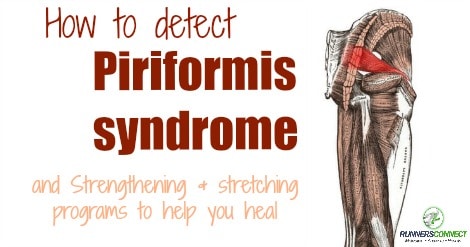
Why is Piriformis Syndrome Worse than Other Injuries?
Your piriformis is positioned immediately adjacent to the sciatic nerve, a very thick nerve which runs from the base of your spine along your glute muscles and down the back of your legs, providing the nerve signals that allow all of the muscles on the back side of your lower body to fire when needed.
Did you know this?
When the piriformis muscle is irritated, the sciatic nerve can get irritated too.
In around fifteen percent of people, the sciatic nerve actually passes through the piriformis, which, according to some researchers, leaves these individuals more susceptible to piriformis syndrome.
Classically, piriformis syndrome feels like an aching, soreness, or tightness in your butt, between the back of your pelvis (the sacrum, specifically) and the top of your femur.
- Pain, tightness, tingling, weakness, or numbness can also radiate into your lower back and down the back side of your leg, through your hamstrings and calves.
- Buttock pain and tightness with prolonged sitting is also a common occurrence with piriformis syndrome.
- When you run, you will probably feel pain in your butt throughout the stance phase of your stride; the pain might get worse when you run fast, go up and down hills, or go around tight turns.
Piriformis syndrome is related to sciatica, a painful irritation which also involves pain, tightness, weakness, and a numb or tingling sensation than courses down from your lower back into your butt, hamstring, and calves or even feet.
This is crazy:
How the piriformis muscle and the sciatic nerve relate to piriformis syndrome and sciatica-like pain is something that even doctors and researchers can't quite agree on.
Their interactions are complicated, as there can be many causes of buttock pain and sciatic nerve pain.
The mere existence of a "piriformis syndrome" has even been questioned, but the most current research and review papers accept that piriformis syndrome represents a real phenomenon that is responsible for buttock and lower leg pain.
What are piriformis syndrome symptoms?
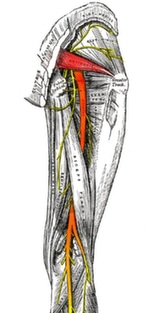
It is very important to distinguish piriformis syndrome from other problems that can cause similar symptoms in the buttock and leg.
A herniated disc in your lower back, for example, can put pressure on the sciatic nerve, causing the same type of pain that radiates down the back side of your leg, as can spinal stenosis (a narrowing of the canal where your spinal cord passes through) and a host of other pelvic and lower back issues.
Here's the deal:
Though there are no universally agreed-upon criteria for piriformis syndrome, a comprehensive review paper published in 2010 by Kevork Hopayian and other doctors at the University of East Anglia in the UK provides useful criteria.
In their study, they defined piriformis syndrome as "sciatica [i.e. musculoskeletal pain in the leg] arising from pressure on the sciatic nerve trunk or its branches by the PM [piriformis muscle] or disorders involving the muscle."
This definition is useful as it encompasses both sciatica-like pain radiating down through the hamstrings that is likely the result of pressure on the sciatic nerve, as well as localized pain and soreness in the piriformis muscle itself.
Hopayian et al. also outlined the four most common findings in patients with piriformis syndrome among the 55 studies they examined:
- Pain in the buttock/piriformis region
- Tenderness at a specific spot in the pelvis between the sacrum and the top of the femur—the area the piriformis muscle runs through.
- Worsening of buttock and sciatica-like pain with prolonged sitting
- Aggravation or alteration of the pain when the hip and leg are positioned to put tension on the piriformis muscle
While these symptoms are definitely evident in people with piriformis syndrome, it's unclear how common they are in people with non-piriformis-related sciatica, so its diagnostic usefulness is somewhat limited.
Fortunately:
Other conditions that can cause similar symptoms can be identified by objective medical tests like an MRI or a CT scan—these can check for herniated discs or other low back and pelvis issues.
If these tests come back clean, piriformis syndrome can be considered as a cause.
Piriformis syndrome tests
There are also a few specific tests for piriformis syndrome that have been highlighted in scientific studies.
The straight-leg raise test
Pain will shoot down the back of your leg when your leg is raised straight (typically by a partner) while you lie on your back. This is indicative of irritation of the sciatic nerve, though it is not specific to piriformis syndrome.
The straight-leg raise test can cause sciatica-like pain if you have piriformis syndrome, but might also indicate the presence of low back problems
Knees against resistance test
This test can be performed while sitting.
Attempt to push your knees out against resistance (provided by a partner or rope). If this causes pain, piriformis syndrome is likely.
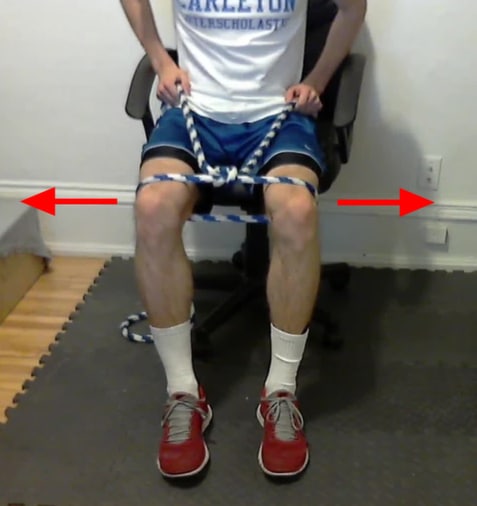
Pain might also occur if you attempt to abduct your hips from a sitting position against resistance provided by a partner or a rope.
Piriformis stretch test
Finally, two maneuvers which put a stretch on the piriformis muscle can also be used to test for piriformis pain.
Having a partner rotate your hip and leg inwards while you lie on your back with your knees straight can produce pain, as can lying on your unaffected side and rotating the painful side across your body with your knee bent.
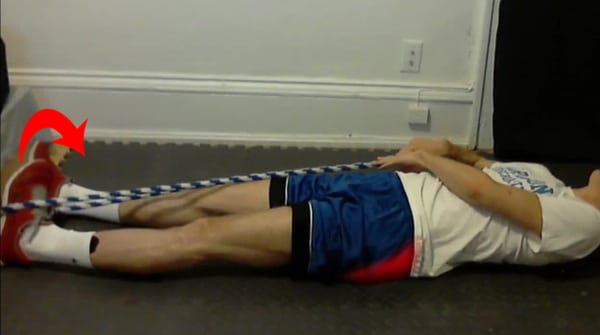
One test which can produce piriformis-specific pain is a supine internal leg rotation, assisted by either by a partner or a rope, as illustrated here.
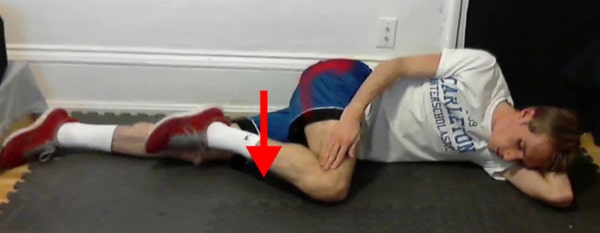
Stretching the piriformis in this position can elicit pain (red area) if you have piriformis syndrome
Though these piriformis-specific tests can help confirm the presence of piriformis syndrome, they are not accurate enough to rule it out.
But here's the kicker:
Hopayian et al.'s review study found no one technique to be reliable or accurate enough to endorse; rather, they cited the more general symptom of aggravation or modulation of piriformis pain when you stretch or tension the piriformis muscle.
You might also be able to feel a thickening in the piriformis muscle itself, deep within your glutes, but this is also not enough by itself to definitively diagnose piriformis syndrome.
Piriformis Syndrome Treatment
As you might have been able to guess from the ambiguity of the symptoms and diagnosis criteria, piriformis syndrome is not a heavily-studied injury, in runners or even in the population at large.
Even case studies of piriformis syndrome in athletes are extremely difficult to come by, so our approach to treatments will have to rely more heavily on a theoretical approach versus one backed by high-quality clinical trials.
Most treatments for piriformis syndrome that are recommended in scientific literature are focused on addressing the painful or irritated piriformis muscle that's (presumably) the cause of the buttock and leg pain.
This largely consists of stretching and strengthening exercises.
Case studies and case series articles from the scientific literature recommend using several different stretches for the piriformis.
Based on what we know about the anatomy of the piriformis muscle, we can come up with ways to stretch it—if, when the hip is in flexion, the piriformis acts as an internal rotator and abductor, we can stretch it by putting our hip into external rotation and adducting it.
The best piriformis stretch (that actually works!)
This is exactly what is accomplished in the stretches recommended by Douglas Keskula and Michael Tamburello in a 1992 article on treatments for piriformis syndrome.
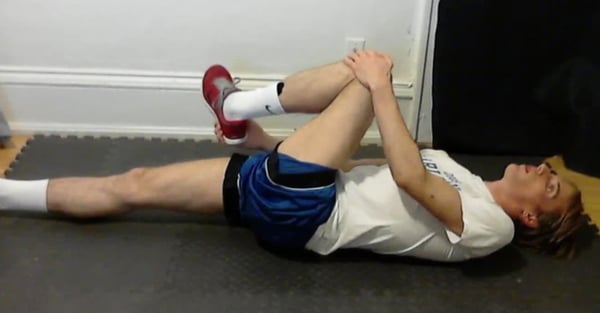
Supine piriformis stretch with a crossover (moving left knee towards right shoulder)
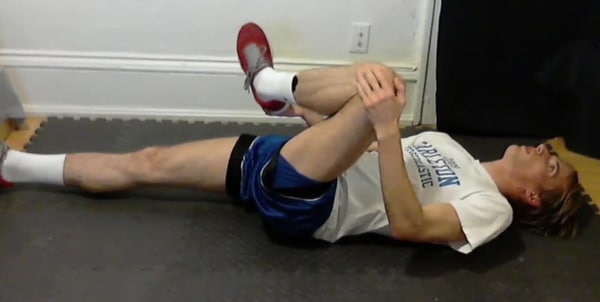 ,
,
Supine piriformis stretch without a crossover (moving heel towards right shoulder)
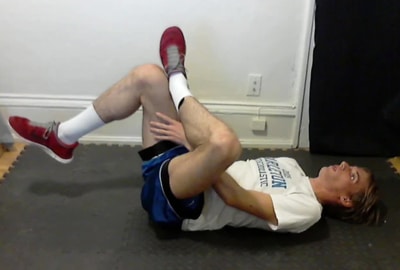
Supine piriformis stretch assisted by opposite leg (moving right knee towards right shoulder)
Keskula and Tamburello recommend starting with three sets of five to ten repetitions of each stretch two or three times per day.
Though Keskula and Tamburello only vaguely describe how long each stretch should be held (progressing "as tolerated" by the athlete), another paper by Pamela Barton at the University of Western Ontario in Canada recommends beginning with holding stretches for five seconds and gradually progressing over time to 60 seconds.
This is important:
You should be gentle with the stretches, not overly aggressive—this may put too much stress on the already-irritated piriformis.
RunnersConnect Insider Bonus
Download our Top 5 exercises to prevent piriformis injuries inside your Insider Members area.
It's a PDF with images and descriptions of the 5 most effective prevention and rehab exercises for runners with Piriformis issues.
GET THE FREE GUIDE
Piriformis exercises
Strengthening exercises are also recommended in several different scientific papers.
As the piriformis works as an abductor and rotator of the hip, strengthening both the piriformis itself and the other hip muscles that surround it is a primary goal of treatment.
A 2010 case report by Jason Tonley and a group of fellow physical therapists describes in detail a strengthening protocol used to successfully treat piriformis syndrome in a 30-year-old recreational athlete who displayed many of the classic signs of poor hip muscle coordination: inward knee rotation during single-leg squats and poor hip abduction and external rotation strength.
To address this, the authors prescribed a 14-week, three step program for hip muscle rehabilitation.
- The first phase consisted only of glute bridges and clamshell leg lifts, both using a theraband for resistance.
- After four weeks, the patient progressed to weight bearing exercises: standing mini-squats (with a theraband), "monster walk" side steps (also with a band), a "sit-to-stand" exercise, and single-leg mini-squats.
- Following four weeks of the second phase, the patient progressed to lunges, deep squats, and even plyometric-style hops and landings (with the intent to prepare him to return to basketball and tennis, his principle sports).
In all phases of rehab, the patient progressed over time to three sets of fifteen repeats of each exercise.
While the rehab program in Tonley et al. was immensely successful with their patient, a case report obviously isn't as useful as a randomized clinical trial.
It's unclear how useful this program would be for other athletes with piriformis syndrome, but given the lack of high-quality studies, and the dearth of research on treatments specifically for athletes, Tonley et al.'s program is still a pretty good place to start.
Consider this:
Combining these strength exercises with the stretches described above should address both muscular weakness and tightness.
Other research on piriformis syndrome has focused on treatments for more stubborn cases.
Is this you?
Some isolated studies describe injections into the piriformis muscle, either of a local anesthetic like lidocane or of a corticosteroid. Studies indicate that pain relief from injections is highly variable, with some patients experiencing long-lasting relief, and others getting none at all.
You won't believe this:
Some newer trials have even investigated BOTOX injections (the muscle-paralyzing drug better-known for its use in cosmetic surgery) for treating recalcitrant piriformis syndrome.
Given how little is known about injectable treatments for piriformis syndrome, especially considering that none of the studies on this topic involved athletes, it's hard to draw any concrete recommendations—these options are something you should discuss with your doctor.
Looking for a last resort?
Surgical release of the piriformis muscle has also been described in multiple papers as a last-resort treatment for piriformis syndrome. As with injectable treatments, studies on surgical patients invariably focus on sedentary people, often with additional existing back or spine problems, so it's nearly impossible to extract any information useful to a runner. Again, talk to a trusted doctor if you are considering surgery.
Other Piriformis Syndrome Treatment Options
Though there's not much in the literature about treating piriformis syndrome in runners, it occurs commonly enough for several "folk treatments" and workarounds to have emerged. Among these are:
- Having a massage or stretching out the piriformis muscle and reduce tightness. One way many runners do so is by rolling their glute muscles on a tennis ball or a lacrosse ball (perfectly shaped to put controlled pressure on the glute area).
- Deep tissue massage techniques like Active Release Technique (ART) and Graston Technique are also popular, and they may well accomplish the same goal as the "myofascial release" massage techniques that are described in some case studies by physical therapists.
- Another popular method to address piriformis syndrome is to simply avoid doing things that irritate the piriformis muscle: prolonged sitting in particular can be very irritating, so modifying your routine so you don't need to sit as often or for as long can be helpful.
- Standing desks are becoming more popular, and taking a short break every hour or so allows you to get your piriformis stretches in, too. If nothing else, experimenting with different sitting surfaces (harder, softer, flatter, or more contoured) might also reduce irritation.
- If you are still able to do some running, avoiding workouts or conditions which irritate your piriformis will also help—common culprits include high speeds, uphills and downhills, and tight turns.
Of course, it goes without saying that none of this is supported by scientific research, so you'll have to experiment with what works for you and what does not.
Piriformis syndrome treatment for those who have tried everything else
These are treatments with more cost and less certainty about outcomes, but may prove useful when you are fed up of your pain.
Working with a physical therapist to develop a specialized rehab program
Because the literature is so sparse on appropriate exercises for treating piriformis syndrome in runners, it might make sense to see a PT if your case is particularly troublesome or long-lasting.
That way, you can address any aspects of your own individual muscular tightness or weakness that might contribute to your injury.
You can find out if your state offers direct physical therapy treatment here.
Active Release Technique or Graston Technique
These soft tissue mobilization exercises don't have any support in the scientific literature, but have been praised anecdotally by some, though not all, runners with piriformis syndrome.
Injections of a local anesthetic, corticosteroid, or BOTOX
If you have a recalcitrant case of piriformis syndrome that has not responded to many months of conservative rehab, you can talk to your doctor about an injectable treatment.
If all else fails, surgery is a final alternative. This is also something you should consult with a trusted doctor about.
Cross Training While Injured and During Recovery
Cross training is recommended while you're injured and as you slowly return to running.
The best form of cross training for this injury is Aqua Jogging. Studies have shown that aqua jogging can enable a well-trained runner to maintain running fitness for up to 4-6 weeks.
Aqua jogging is a form of deep water running that closely mimics the actual running movement. Your feet don't actually touch the bottom of the pool, so it is zero impact and safe for almost any type of injury. In my experience, the only time to avoid aqua jogging is when you have a hip flexor injury, which can be aggravated by the increased resistance of the water as you bring your leg up. Because aqua jogging closely mimics natural running form, it provides a neuromuscular workout that, in addition to aerobic benefits, helps keep the running specific muscles active. The same can't be said for biking and swimming. The only downside to aqua jogging is that you need a pool that is deep enough to run in without touching the bottom. If you're lucky enough to have access to a pool of this size, aqua jogging should be your first cross training choice.
In one study, a group of ten runners trained exclusively with deep water running for four weeks and compared 5km race times pre deep water running and post deep water running.
The researchers found no statistical difference in 5k time or other markers for performance, such as submaximal oxygen consumption or lactate threshold.
In a second study, researchers measured the effects of aqua jogging over a six week period.
This time, 16 runners were separated into two groups – one who did aqua jogging workouts and the other who did over land running.
Using the same training intensities and durations, the researchers found no difference between the groups in maximal blood glucose, blood lactate, and body composition.
It get's better:
Research has also demonstrated that aqua jogging can be used as a recovery tool to facilitate the repair of damaged muscles after hard workouts.
These findings make aqua jogging an important recovery tool in addition to being the best cross training method for injuries.
Need one more reason?
The calories burned aqua jogging are even higher than running on land, so if you want to avoid weight gain while you take time off from running, this is definitely the exercise for you!
Aqua Jogging Workouts For Runners
If you're interested in aqua jogging to rehab your injury, then the absolute best way is to use one of my favorite programs, Fluid Running.
First, it comes with an aqua jogging belt and waterpoof bluetooth headphones so you have everything you need to aqua jog effectively.
Second, they have an app that pairs with the headphones so you can get workouts, guided instructions on how to aqua jog properly, and motivation while you're actually pool running.
This has been an absolute game changer for me when I am injured.
I used to dread aqua jogging workouts because they were so boring and it took all my mental energy to stay consistent.
But, with workouts directly in my ear, it's changed the whole experience and I actually look forward to the workouts. So much so that I now use aqua jogging as a cross training activity in the summer, even when I am not injured.
Fluid running is an awesome deal when you consider it comes with the belt (highly recommended for better form), the waterproof headphones (game changer for making pool workouts fun), a tether (to add variety to the workouts you can do) and the guided workout app (to make your cross training structure and a whole lot more interesting).
That's why we've partnered with them to give you 2 additional running-specific workouts you can load into the app when you use the code RTTT .
Check out the product here and then on the checkout page, add the code RTTT in the coupon field and the workouts will be added to your order for free.
If you'd rather do the aqua jogging workouts on your own, here are some great ideas to get you started!
Medium Effort Workouts
The Pyramid
10 minutes easy warm up - 1:00 hard, 30 seconds easy - 1:30 hard, 30 seconds easy - 2:00 hard, 30 seconds easy - 2:30 hard, 30 seconds easy, go to 5:00 in 30 second intervals and then come back down the pyramid (4:30 hard, 30 easy, 4:00 hard, 30 easy etc). Finish with 10 minutes easy cool down.
Wave your hands in the air like you just don't care
10 minutes easy warm up, 1 minute medium (87-92% of maximum heart rate or what feels like tempo effort), 1 minute sprint (95-100% of maximum heart rate or all out sprint), 30 seconds hands in air (keep moving your legs in the running motion, but put your hand above your head), 1 minute rest, Repeat 10-15 times. 10 minutes easy cool down.
Hard Workouts
One of the difficulties of cross training is replicating those truly lung-busting, difficult workouts.
So, if you're going to be pool running quite a bit due to injury or limited training volume, invest in a bungee cord designed for sprinters.
Tie one end of the resistance band to a sturdy object (pole, lifeguard stand, pool ladder) and bring the other into the water with you.
Put the strap around your waist and begin aqua jog away from your starting point.
You'll begin to notice the bungee tighten and resist against you (depending on the length of your pool, you may need to wrap the bungee around the supporting object or tie it in knots to make it shorter to feel resistance).
Spend a few moments testing yourself to see how far you can pull the bungee.
This is a great challenge and a fun way to compete with yourself during an otherwise boring cross training activity.
Now for the hard part:
Pick a point on the pool wall or side of the pool that you feel stretches the bungee to a very hard sprint that you could maintain for 60-90 seconds.
This will be your "sprint" marker that you'll use on sprint intervals (95-100% of maximum heart rate or all out sprint).
Now:
Find a point that feels like the end of a hard tempo run.
Mark this spot as your "medium" interval distance.
When you complete the hard workouts, you can use these reference points to ensure that you maintain a very hard effort.
The springboard
10 minutes easy warm up, 90 seconds easy (slowly moving out and stretching the bungee), 2 minute medium, 1 minute sprint, 1 min rest (let the bungee pull you back – this is kind of fun). Repeat 10 times. 10 minutes easy cool down.
The race simulation
10 minutes easy warm up, 90 seconds easy (slowly moving out and stretching the bungee), 5 minutes medium (focus and concentrate, just like during the hard part of a race), 30 seconds sprint, 2 minutes rest. Repeat 4 times. 10 minutes easy col down
The lactic acid
10 minutes easy warm up, 90 seconds easy (slowly moving out and stretching the bungee), 2 minutes sprint, 90 seconds rest. Repeat 12 times, 10 minutes easy cool down.
I guarantee that with the bungee, you'll get your heart rate through the roof.
You can challenge yourself and make aqua jogging more fun by seeing how long you can stay at your maximum stretched distance or seeing how far you can push it.
Likewise, if you have a friend who is injured (or someone willing to be a good sport) you can try pulling each other across the pool for some competitive fun.
Cross training can be tough, especially when you're injured or want to be increasing your volume faster.
However, I hope that providing a variety of workouts, either through the Fluid Running app (which also makes it easier to keep track of the workout while in the water) or on your own can add a fun challenge in the pool and you can emerge from your injury with minimal fitness loss.
Can I Run Through Piriformis Syndrome?
Piriformis syndrome can be a chronic, long-lasting injury.
Your ability to return to training will likely not come all at once.
Rather, as your hip strength gradually improves and your piriformis gets less irritated over time, your tolerance for running should gradually increase.
It is wise to strive to keep your running volume and intensity within your tolerance range, so you don't re-aggravate your piriformis.
If you find yourself unable to make progress, it likely means there is an underlying problem that has not yet been addressed.
Beyond this, the lack of scientific research on piriformis syndrome makes it very difficult to recommend any specifics on a return-to-running program.
Working with a doctor or physical therapist to return to your usual training routine is an excellent idea if you have a stubborn case of piriformis syndrome.
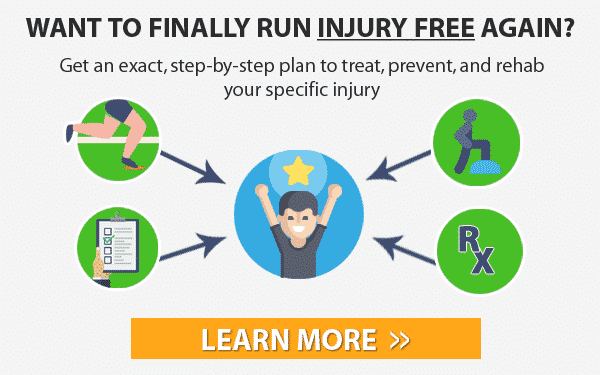
Source: https://runnersconnect.net/piriformis-syndrome-running/
